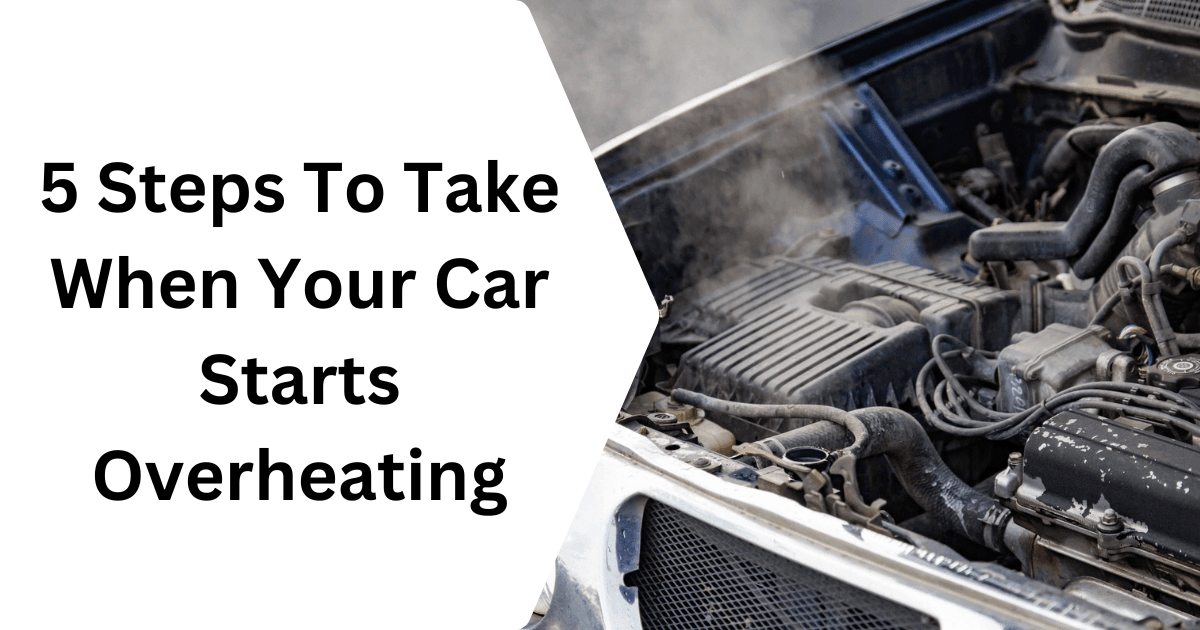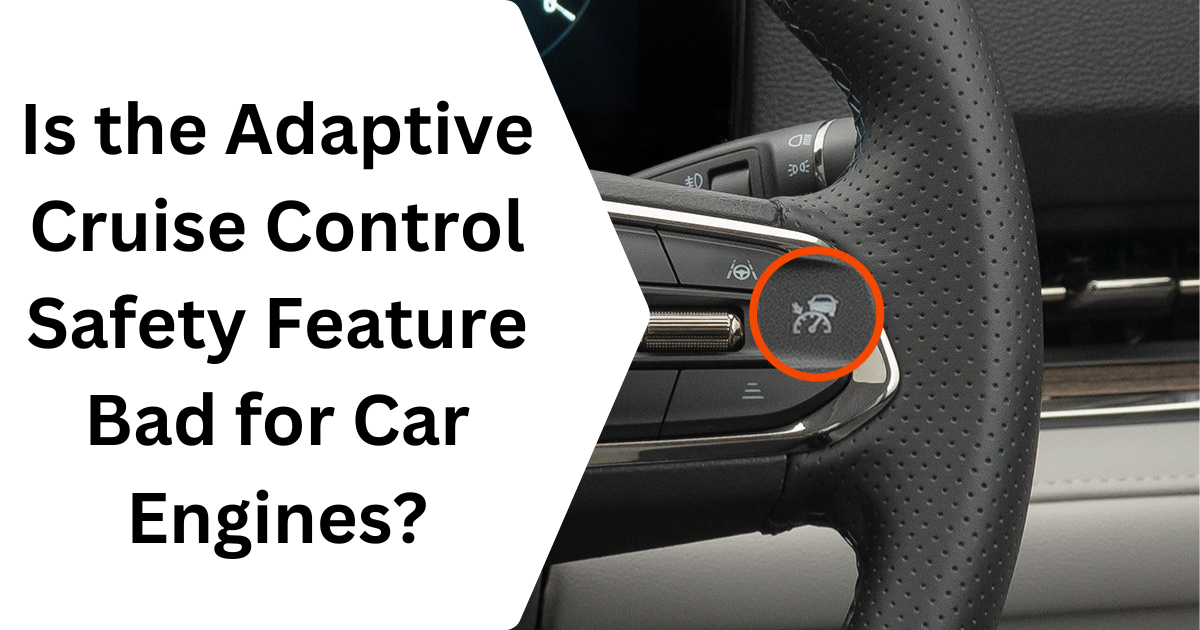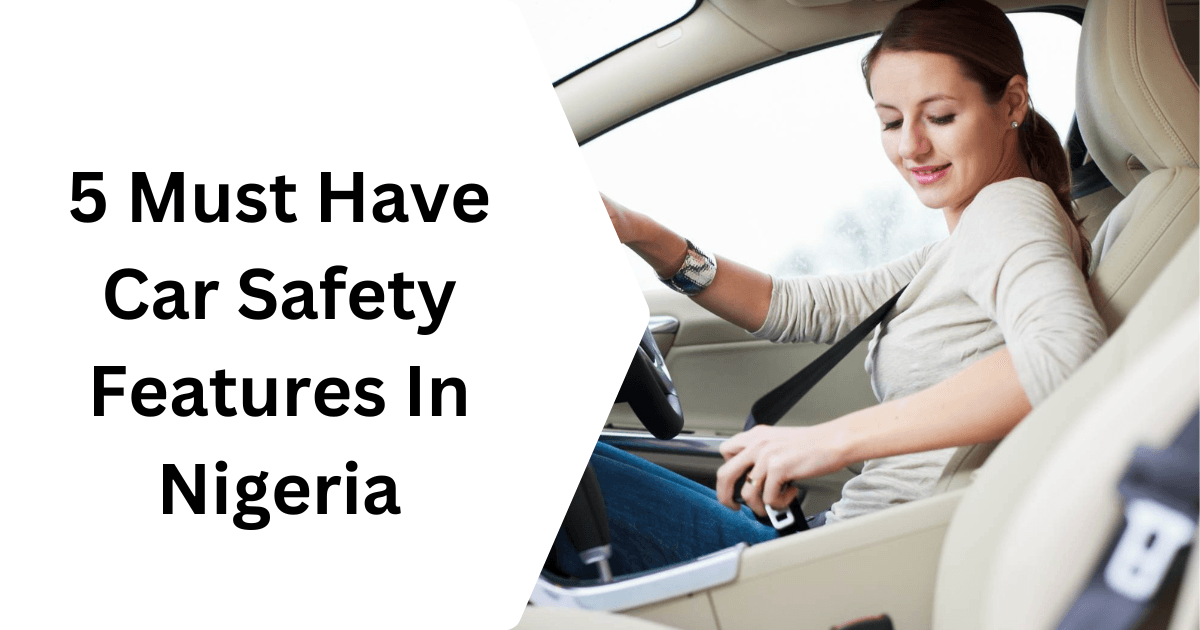Dealing with an overheating car can be stressful and dangerous, especially if it happens while you’re driving. When a car overheats, it can lead to serious engine damage if it’s not handled right away. Overheating can be caused by low coolant, a broken radiator, or other engine issues, all of which can quickly become costly problems if ignored.
In this article, we’ll go over a few simple steps to help you cool down your car and stay safe on the road. Here are five things to do when your car starts to overheat.
Step 1: Pull Over Safely and Turn Off the Engine
As soon as you notice your car overheating, find a safe place to pull over. Look for a spot away from traffic, such as a parking lot or the side of the road, and use your hazard lights to alert other drivers. Pulling over quickly can prevent further damage to the engine, as continuing to drive while overheating can cause serious issues.
Once you’ve pulled over, turn off the engine right away. This helps cool down the engine and gives it a break from the heat. Keeping the engine off allows it to start cooling down naturally, reducing the risk of severe damage to key parts. Turning off the engine is the first step to safely handling an overheating car and keeping your engine protected.
Step 2: Wait for the Engine to Cool Down Before Opening the Hood
After turning off the engine, wait at least 15-30 minutes before opening the hood. Opening the hood too soon can be dangerous, as overheating can cause hot steam or fluids to escape suddenly. Waiting gives the engine time to cool down, which helps prevent burns or injuries from the hot engine parts and fluids.
During this time, keep an eye on the temperature gauge inside your car. Once it drops back to a normal range, it’s generally safe to open the hood and check for any visible issues. Waiting for the engine to cool down is a simple but important step to keep yourself safe and make it easier to inspect your car’s condition.
Step 3: Check Coolant and Radiator Levels
Once the engine has cooled down, carefully open the hood and check the coolant level in the reservoir. The coolant (or antifreeze) helps regulate your car’s temperature, and low levels can cause overheating. If the coolant is low, you can top it up with the recommended coolant or, if necessary, use water as a temporary solution. Be sure to avoid opening the radiator cap directly while the engine is still warm, as hot steam can escape.
After checking the coolant, inspect the radiator and hoses for any signs of leaks or damage. Leaks can lead to coolant loss, causing the engine to overheat again. If you notice any leaking fluid or broken hoses, it’s best to arrange for repairs as soon as possible. Keeping coolant at the proper level and ensuring there are no leaks helps prevent future overheating and keeps your car running smoothly.
Step 4: Inspect for Leaks or Broken Belts
After checking the coolant, take a closer look for any leaks under the car or around the engine area. Look for signs of leaking fluids, like coolant or oil, as these can contribute to overheating if left unfixed. Puddles or wet spots on the ground or around engine parts may indicate a leak, which should be addressed promptly to prevent further overheating.
Also, inspect the engine belts, such as the serpentine or timing belt, for any signs of damage or wear. Broken or worn belts can disrupt the cooling system, causing the engine to overheat. If a belt looks frayed, cracked, or loose, it may need replacing. Checking for leaks and broken belts helps you catch problems early, reducing the chance of serious engine damage.
Step 5: Drive to a Mechanic or Arrange for Towing if Necessary
If you’ve checked the coolant, radiator, and belts but still notice overheating or if the problem seems serious, it’s best to visit a mechanic right away. Driving a car that overheats frequently can lead to major engine damage, which is often costly to repair. If the car can be driven without overheating further, drive carefully and head straight to the nearest mechanic for a thorough inspection.
However, if the car overheats again shortly after starting it, it’s safer to arrange for towing. Towing prevents further damage and allows professionals to inspect and repair the issue. Whether you drive to a mechanic or call for a tow, addressing the problem quickly helps protect your engine and keeps you safe on the road.
How to Stop Your Engine from Overheating
One way to prevent your engine from overheating is by keeping the coolant at the right level. Coolant, also known as antifreeze, is essential for absorbing heat from the engine and maintaining a steady temperature. Check the coolant regularly, especially before long drives, to make sure it’s full. A low coolant level is one of the most common causes of overheating, so keeping it topped up can help prevent issues.
Another tip is to inspect your radiator and hoses for leaks or signs of wear. The radiator and hoses carry coolant through the engine, so if they’re damaged or leaking, the engine can overheat quickly. Make it a habit to check for any signs of fluid leaks under your car or around the radiator. Fixing leaks or replacing worn-out hoses promptly can help prevent sudden overheating.
Regularly changing your engine oil is also important for keeping your engine cool. Oil lubricates engine parts and reduces friction, which generates heat. Old or low oil levels make it harder for the engine to stay cool, putting it at risk of overheating. Following your car’s recommended oil change schedule ensures that the engine stays well-lubricated and cool.
Driving habits also play a role in preventing overheating. Try to avoid rapid acceleration, frequent braking, and high speeds, as these make the engine work harder and generate more heat. Instead, drive at a steady pace and avoid heavy traffic when possible. This keeps the engine running more efficiently and reduces the risk of it overheating.
Finally, if you’re driving in hot weather or heavy traffic, give the engine breaks when possible. Turn off the air conditioner if it’s not essential, as it puts extra strain on the engine. When stuck in traffic, shift to neutral or park if you’re stopped for a long time. Small steps like these can make a big difference in keeping your engine cool and running smoothly.
FAQs
What are the common signs that my car is overheating?
Common signs include a rising temperature gauge, steam coming from under the hood, a warning light on the dashboard, or a strange smell (sweet if coolant is leaking or burnt if the engine is overheating).
Can I keep driving if my car is overheating?
No, continuing to drive an overheating car can cause severe engine damage. It’s best to pull over safely, turn off the engine, and follow steps to cool the vehicle down.
What should I do if there’s steam coming from under the hood?
If you see steam, pull over immediately and turn off the engine. Let the car cool completely before opening the hood to check for coolant leaks or other issues.
Should I add water or coolant to my radiator when my car overheats?
Yes, but only after the engine has completely cooled down to avoid burns. Check the coolant level and add coolant or water to the reservoir if it’s low, as this can temporarily help.
What causes a car to overheat?
Overheating can be caused by low coolant levels, a malfunctioning thermostat, a broken water pump, radiator issues, or a failing cooling fan. Regular maintenance can help prevent these problems.
Overheating can be stressful, but knowing how to respond can prevent further damage to your car. Always prioritize safety—pull over, turn off the engine, and let the vehicle cool before taking action. Keep your cooling system well-maintained to avoid overheating in the first place. For more tips on car maintenance and safety, stay tuned to our blog! 🚗




